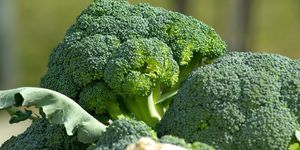Higher Incidence of Breast Cancer in Polluted Urban Areas
A Taiwanese study looked at the incidence of breast cancer in areas of Taiwan with varying levels of air pollutants. Air pollutants measured included carbon monoxide (CO), nitric oxide (NO), nitrogen dioxide (NO2), methane (CH4), total hydrocarbon concentration (THC), and fine particulate matter (PM2.5).
These air pollutants are produced by burning fossil fuels and emitted from vehicles and power plants. They've been linked to the development of asthma and respiratory and immune dysfunction. Some also deplete the ozone, which is linked to skin cancer, cataracts, and impaired crop and marine life viability.
Previous studies have found that exposure to high levels of particulate matter may reduce the length of survival for patients with breast cancer. Fine particulate matter is composed of microscopic droplets that are small enough to be inhaled and can get into the lungs and the bloodstream. This matter is responsible for the haze seen in polluted cities. Health effects from fine particulate matter in humans include heart attacks, irregular heartbeats, exacerbated asthma, and respiratory irritation.
Researchers in this study tracked the average annual air pollutant concentration from 78 air quality monitoring stations and calculated participants' long-term average exposure levels to these air pollutants for nearly a decade or until breast cancer diagnosis was made. They found the most urbanized areas of Taiwan had the highest air pollutant concentrations and the highest ratio of new cases of breast cancer. In particular, areas with the highest concentration of carbon monoxide, total hydrocarbons, and methane were associated with a significantly higher risk of breast cancer.
Other factors not controlled for in this study that could possibly have contributed to varying levels of breast cancer in different areas of the country, however, were diet, demographics, lifestyle, underlying disease, and genetic background.









